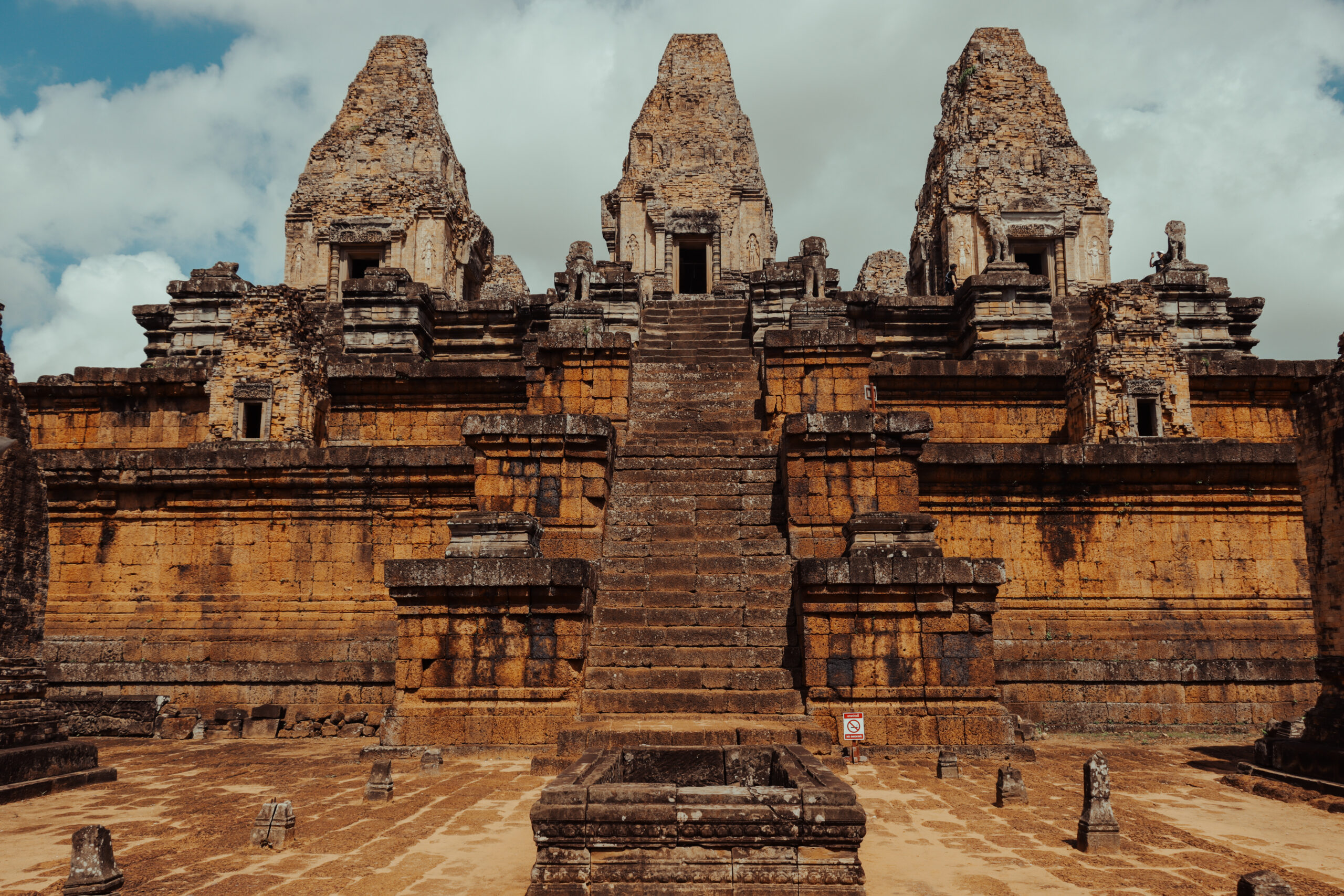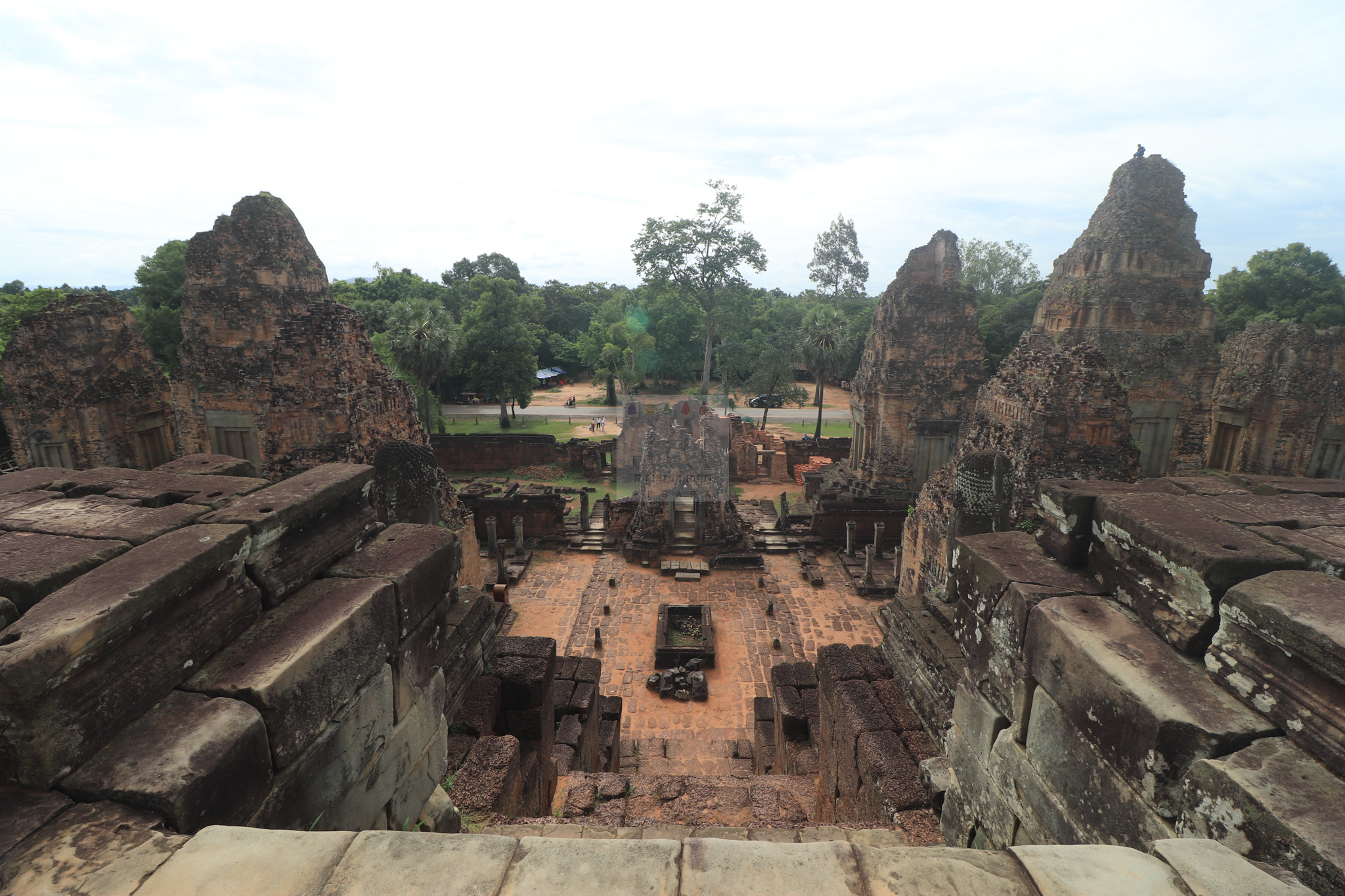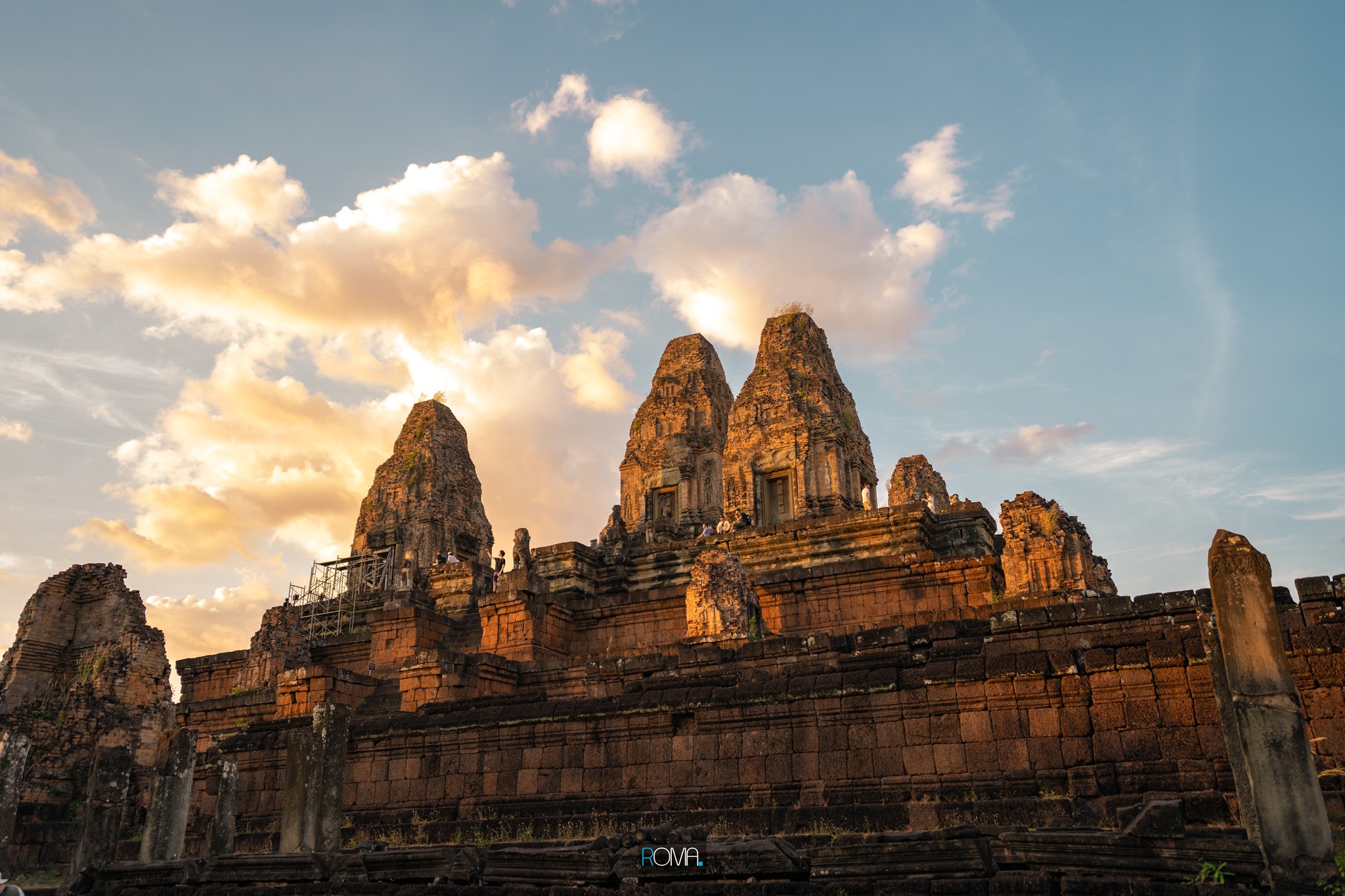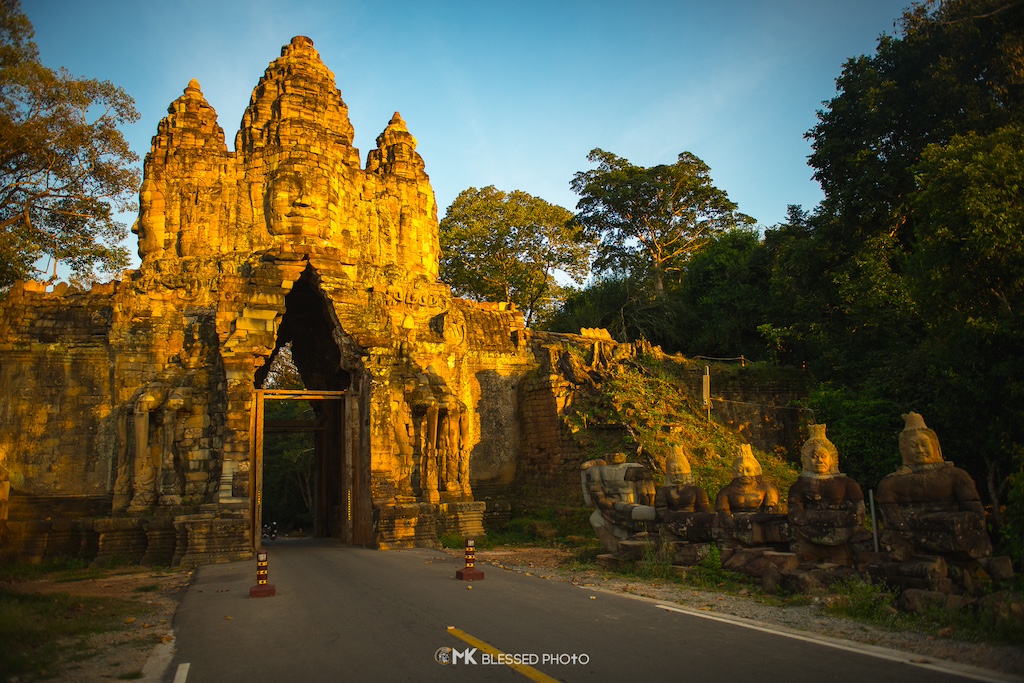(Photos by: Siem Reap Provincial Tourism Department & Roma Lim)
Pre Rup: A Majestic Temple of Timeless Sunsets
Pre Rup, a monumental temple mountain in the heart of the Angkor Archaeological Park, stands as a timeless witness to the grandeur of the ancient Khmer Empire. Built by King Rajendravarman in 961 AD, Pre Rup served as the state temple and is a classic example of the architectural style of the early Angkor period.
Constructed primarily from brick, laterite, and sandstone, Pre Rup's distinct reddish hue intensifies with the setting sun, making it a popular spot for sunset viewing. The temple's name, which means 'turn the body,' is thought to derive from a traditional cremation ritual, though this remains a subject of debate among historians.
Pre Rup's architectural layout is a representation of the Hindu cosmology, with the central pyramid symbolizing Mount Meru, the home of the gods. The five towers on the uppermost level of the temple correspond to the five peaks of Mount Meru, with the central sanctuary dedicated to the Hindu god Shiva.
The temple's eastern approach is marked by a "long hall" once believed to be an ancient audience hall or palanquin hall. The intricate carvings and bas-reliefs on the towers and walls depict Hindu deities and mythological scenes, showcasing the artistic mastery of the Khmer builders.
Despite being less restored than some of its more famous neighbors, Pre Rup's rustic charm and the tranquility of its surroundings offer a more contemplative experience. The panoramic views from the upper terraces are breathtaking, especially at dusk, as the temple basks in the warm glow of the setting sun.
Pre Rup's historical significance, architectural beauty, and idyllic location make it a must-visit destination for those exploring the ancient wonders of Siem Reap. It offers a unique glimpse into the spiritual and cultural heritage of Cambodia, remaining an enduring symbol of the Khmer architectural prowess.
Major Sight Spots in Pre Rup
Central Sanctuary: The highest point with panoramic views.
Eastern Approach 'Long Hall': Historic approach to the temple.
Carvings and Bas-reliefs: Intricate artwork depicting Hindu mythology.
Upper Terraces: Ideal for sunset viewing and contemplation.
Five Towers: Symbolizing the peaks of Mount Meru.








